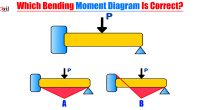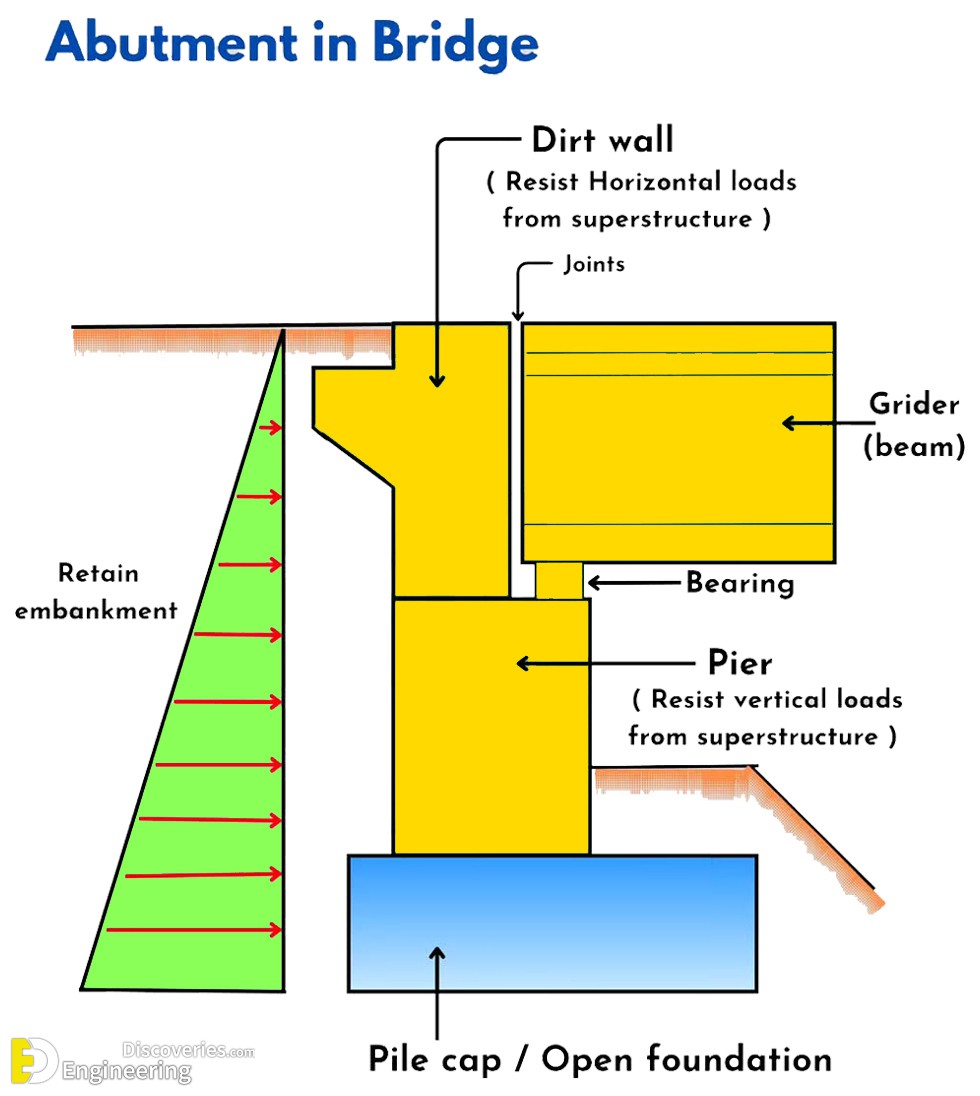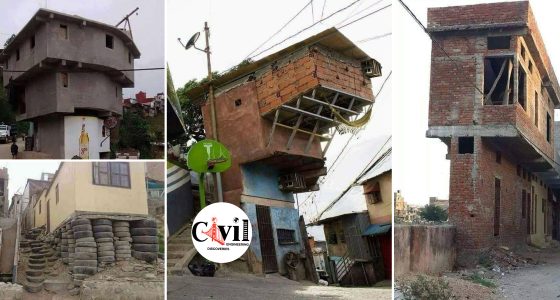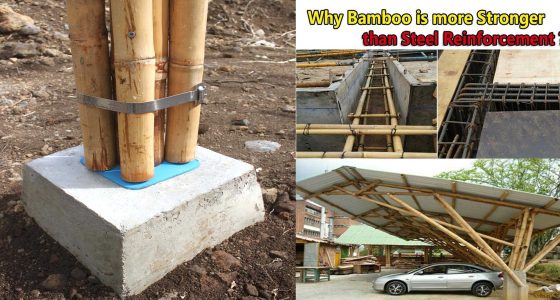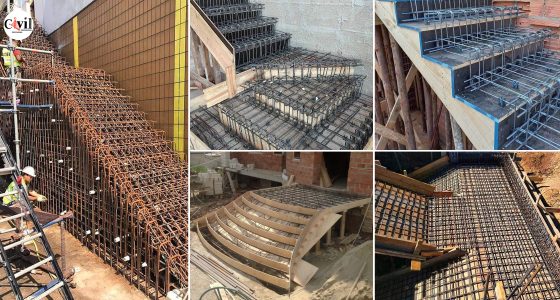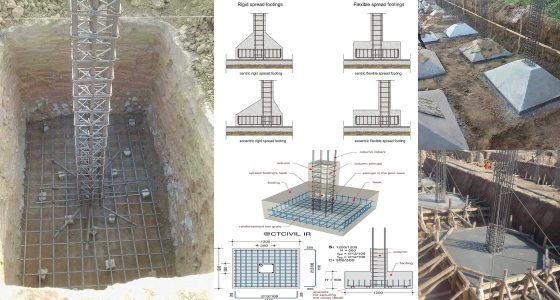In modern bridge engineering, the abutment is a foundational element that performs multiple critical roles. An efficient abutment not only supports the bridge structure but also ensures the entire system’s stability, functionality, and durability. In this comprehensive article, we delve into the key components, structural function, and engineering principles of bridge abutments to help engineers, architects, and civil infrastructure professionals understand this vital component in depth.
What Is a Bridge Abutment?
A bridge abutment is the substructure located at the ends of a bridge span. It serves two essential purposes:
Supports the vertical loads from the bridge superstructure, including the deck, girders, and vehicles.
Retains the embankment, preventing the soil from spilling and offering a smooth transition from the road to the bridge deck.
Major Components of a Bridge Abutment
Understanding the anatomy of a bridge abutment helps in proper planning and design. Let us break down its core components:
1. Dirt Wall
The dirt wall, often referred to as a back wall or breast wall, is designed to resist horizontal loads from the superstructure and retained soil. It holds the soil mass behind the abutment and helps maintain the stability of the embankment.
2. Joints
Expansion and contraction due to temperature fluctuations can cause significant stress in bridge components. Joints are provided to absorb these movements, minimizing the risk of cracks or structural damage.
3. Girder (Beam)
Girders or beams act as the main horizontal support across the span. They rest on the abutment via bearings and are responsible for transmitting the deck load to the abutment.
4. Bearings
Placed between the girder and pier or abutment, bearings allow for controlled movements such as rotation and translation due to thermal expansion, seismic activity, or live loads. They protect the structure by dissipating the stresses.
5. Pier
The pier acts as the vertical support, transferring the superstructure loads directly to the foundation. In some bridge types, abutments may also include a pier-like structure for added load-bearing capability.
6. Pile Cap or Open Foundation
This is the base of the abutment. It could either be a pile foundation, which distributes loads deep into the earth, or an open foundation, where spread footings transfer the load to a shallow depth. It ensures uniform load transfer and structural integrity.
Functions of Bridge Abutment
Bridge abutments are designed not only as passive supports but as critical active members of the bridge system. Their key functions include:
Resisting Vertical Loads: Carries the weight from the deck, traffic, and bridge components.
Withstanding Horizontal Forces: From braking vehicles, seismic activity, and soil pressure.
Providing Lateral Stability: Prevents soil movement and erosion.
Transition Support: Ensures a seamless roadway-to-bridge passage.
Aesthetic Integration: Often shaped and styled to match landscape or architectural requirements.
Types of Bridge Abutments
Abutments can be categorized based on their design, structure, and application:
1. Gravity Abutment
These rely on mass and weight to counteract the forces acting upon them. Typically constructed using concrete or stone masonry, gravity abutments are best suited for short to medium-span bridges.
2. U-Frame or Cantilever Abutment
Used in modern bridge designs, these abutments function like cantilever walls, resisting loads through their reinforced concrete design. Ideal for urban bridges where space is limited.
3. Pile Foundation Abutment
When soil conditions are unsuitable for shallow foundations, piles are driven deep into the earth. This type supports heavy vertical and lateral loads and is essential in seismic-prone zones.
4. Spill-Through Abutment
Designed with open spaces between columns, these abutments allow water or wind to pass through, reducing hydraulic pressure or wind loads. Common in railway bridges or flood-prone areas.
5. Stub Abutment
Compact in size, stub abutments are used where the embankment itself provides sufficient soil mass and only minimal abutment structure is needed.
Load Considerations in Abutment Design
For optimal performance, abutment design must account for various loads:
Dead Load: Weight of the bridge itself.
Live Load: Vehicles, pedestrians, or railway traffic.
Earth Pressure: Horizontal soil force exerted by the retained embankment.
Hydrostatic Pressure: In cases of submerged abutments or water tables.
Seismic Load: Earthquake forces, especially in high-risk regions.
Wind Load: Lateral pressure exerted by high winds.
Materials Used in Abutment Construction
Material selection influences durability, cost, and maintenance:
Reinforced Concrete: Most common due to high strength, versatility, and lifespan.
Prestressed Concrete: Used in high-performance or long-span designs.
Stone Masonry: This is Traditional and still used for small bridges or heritage projects.
Steel: Occasionally used for piers or supports in temporary or modular bridges.
Bridge Abutment Design Best Practices
To ensure performance and longevity, engineers should follow:
Adequate Drainage: Incorporate weep holes and drainage pipes to prevent water accumulation behind abutments.
Seismic Detailing: Include reinforcements, ductility provisions, and isolation bearings where necessary.
Soil Testing: Conduct thorough geotechnical analysis to choose the correct foundation.
Regular Inspection: Monitor for settlement, cracks, and joint integrity.
Environmental Adaptation: The Design should reflect the surrounding topography and climate.
Click Here To See Types Of Structural Bridges: A Comprehensive Guide

